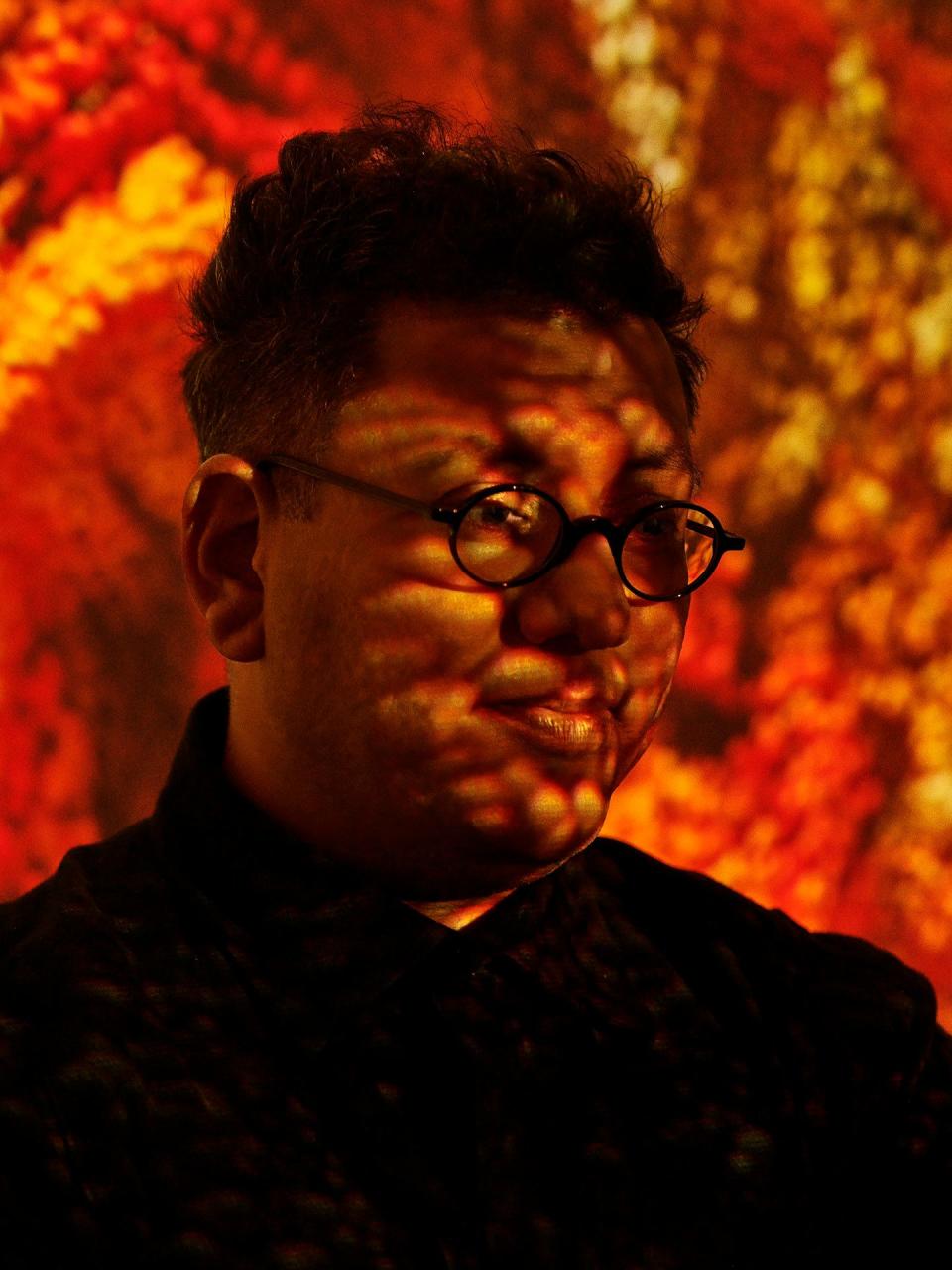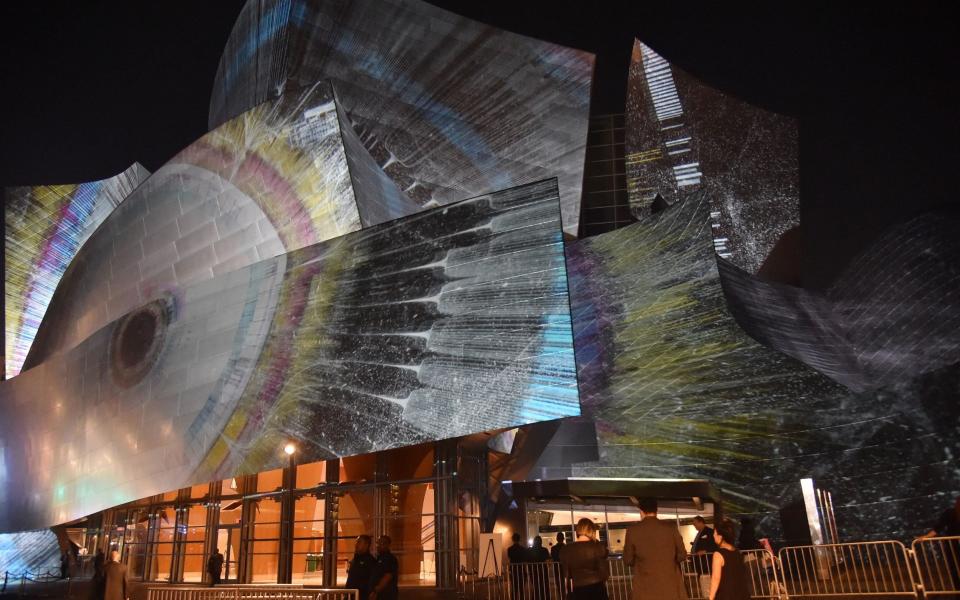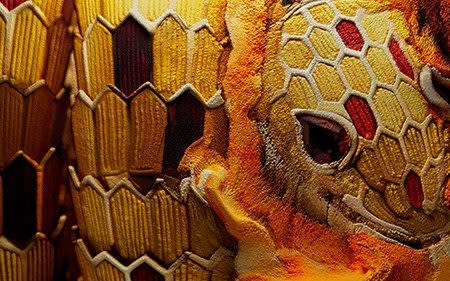What the future holds for the art world – from data-painting to NFTs

Inside Refik Anadol's studio in Frogtown, an artist's hub in East Los Angeles, there are no paint splatters or plaster splodges and not a single discernible canvas. Instead, 6ft-high flat screens hang from the ceiling upon which an amorphous mass of what appears to be organic matter undulates under the title Machine Hallucinations. Another screen shows an endless stream of National Geographic-worthy landscapes entitled Synthetic Dreams. Synthetic, because even though they look like the Grand Canyon or the Zambezi, they are in fact AI-generated images of an imaginary universe.
'It's not only computers but also robots,' Anadol tells me excitedly as we tour the studio, a complex of warehouses on the concrete banks of the Los Angeles river. Here, on a daily basis, his international team of 15 architects, data scientists and musicians collaborate with machines in the name of art. In one room a giant robotic arm lurks ominously in the corner (it is a 3D printer). In another, Anadol picks up an Xbox controller and gives me a glimpse of a databank of several million flowers suspended in a sprawling constellation, grouped by colour.
We zoom in, and in, and in, until individual fuchsia-coloured dahlias, roses and hydrangeas start to appear. In the courtyard, next to two Teslas and an electric BMW i3, a weather station measures wind speed and temperature among other things – valuable data for a forthcoming LA show, I discover. Data to Refik Anadol is what marble was to Auguste Rodin.
'Data painting'
Anadol doesn't fit into a conventional fine-art box. Instead, he has created a career for himself that allows architecture, science and technology to coalesce into something quite new. His art, which takes the form of abstract installations and data-visualisation sculptures (moving images projected on to a building or around a room, so you feel you are immersed in the work), has an instant wow factor.

The viewer is transported to a meditative, hypnotic, dreamy state of mind. His early pieces caught the attention of Bill Gates, and in 2013 Anadol was awarded the Microsoft Research Best Vision Award. His grand-scale public artworks have since made it to Melbourne, Seoul, San Francisco and New York, and his clients and collaborators include tech giants Google, Siemens, Meta, Intel and AI specialist Nvidia.
'So, in 2008 I think I coined the term "data painting" for the first time,' the Turkish-born artist says, informing me that his 'eureka moment' came while he was studying for his first masters in fine art at Bilgi University in Istanbul. His parents were numbers people: his father was a bank manager and his mother worked for the equivalent of the HMRC.
After university in Istanbul, he went on to study art at the University of California, drawn by its proximity to Silicon Valley and the technology that so fascinated him. He set up a studio-cum-laboratory in LA in 2014; two years later Google named him its art and machine intelligence artist in residence, and gave him access to the world's most cutting-edge AI resources. There he became a master of machine learning.

'And that's where I got obsessed about archives,' he explains. 'To me data is not numbers, data is a form of memory and it can take any shape. So the last six or seven years we downloaded three billion images... and if the raw data is the memories, what can be the dream?' In a Blade Runner way, he asks himself questions about whether a machine can dream. 'And if it can dream, can it really show us something similar to our consciousness?' With the benign air of a boffin who has an all-consuming passion for his subject, he comes across as much older than his 37 years.
Installations, NFTs and jewellery
In 2018 Anadol took over the exterior of Frank Gehry's chef-d'oeuvre the Walt Disney Concert Hall, home of the LA Philharmonic. To honour the orchestra's centenary he took its archive, which included 40,000 hours of recordings from more than 16,000 performances, and with a little help from AI created WDCH Dreams. The 12-minute animation combining video, sound, photography and data visualisation to tunes by Stravinsky et al was projected on to the building's curving steel walls. More than 100,000 people came to feast their eyes and ears on the artwork.

It's hardly surprising that someone so forward-looking should have an entrée to Nasa's Jet Propulsion Laboratory. His work on space exploration resulted in Non Fungible Tokens (NFTs), which sold at Sotheby's Hong Kong for $5 million, a record in the Asian market. His association with Bulgari, the Roman jeweller founded in 1884, which specialises in opulent, tactile gold creations – the opposite of the futuristic and virtual – is more surprising.
'We both search for beauty'
But this month, Anadol will partner the jeweller on an immersive installation inspired by its Serpenti snake-form design, which will celebrate 75 years of reptilian glamour next year. And for Lucia Silvestri, Bulgari's creative director of jewellery, working with Anadol makes perfect sense. 'We both search for beauty,' she says. 'The iconic Serpenti Collection is a timeless symbol of transformation and evolution.'

The installation, which will be at London's Saatchi Gallery, will allow visitors to watch as an AI-created snake slithers through the space. Assembled out of 200 million images and accompanied by AI-created sound, it will – in what Anadol believes is a world first – also have an AI-created scent, called Rainforest, filling the room.
Anadol's work will sit alongside the vintage Serpenti necklaces, bracelets and watches that have adorned the wrists and necks of Elizabeth Taylor, Sophia Loren and Charlize Theron. 'The serpent is a very powerful form in mythology and in indigenous art,' says Anadol. 'It was a very brave starting point for my imagination.' His research into snakes included a trip to the Amazon.
Even back in LA, Anadol gets into nature whenever he can in what he calls 'offline moments', which consist of hiking in the Hollywood Hills with his Turkish wife, Efsun Erkılıç, also an artist. But offline moments are few and far between. His studio is already hard at work on its own metaverse, called Dataland. This will be, he says, 'an imaginary space that exists both in the physical and virtual world. I think it will be the very first metaverse that is multisensory. It will have taste, touch, scent, vision and hearing.' Almost like real life, then. But a reality shaped by Anadol and his robots.

As for what the future holds for the art world's love affair with AI, he believes we are on the verge of a creativity boom akin to the advent of the printing press. 'AI is changing the trajectory of imagination. There are all kinds of computational powers, lots of tools are becoming available for creators,' says Anadol, primed and ready for the next Renaissance.
Essentials
Serpenti Metamorphosis is at the Saatchi Gallery, London SW3, November 25-December 23 (saatchigallery.com).

